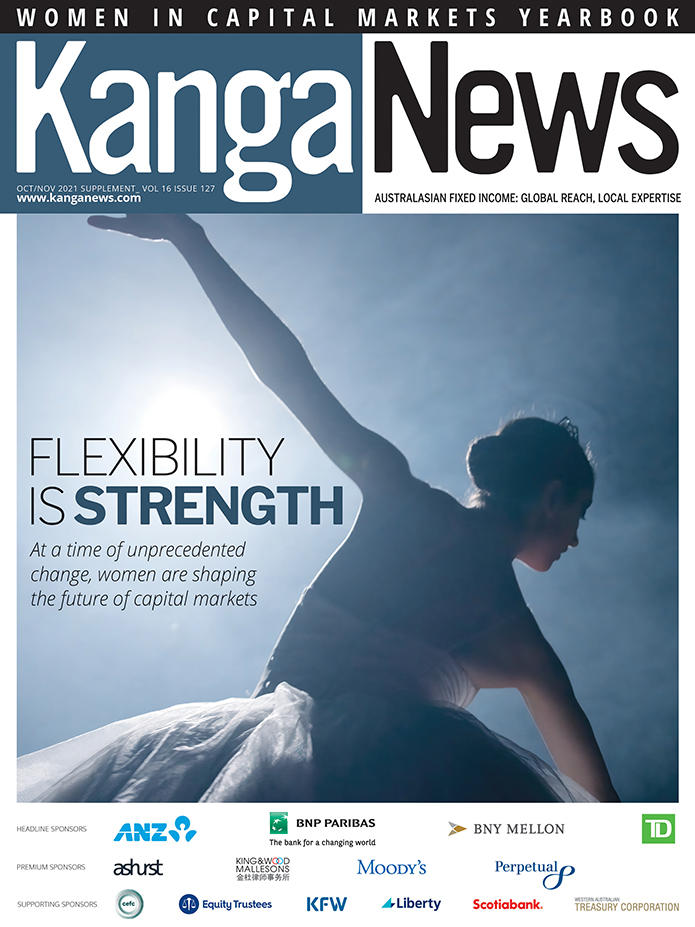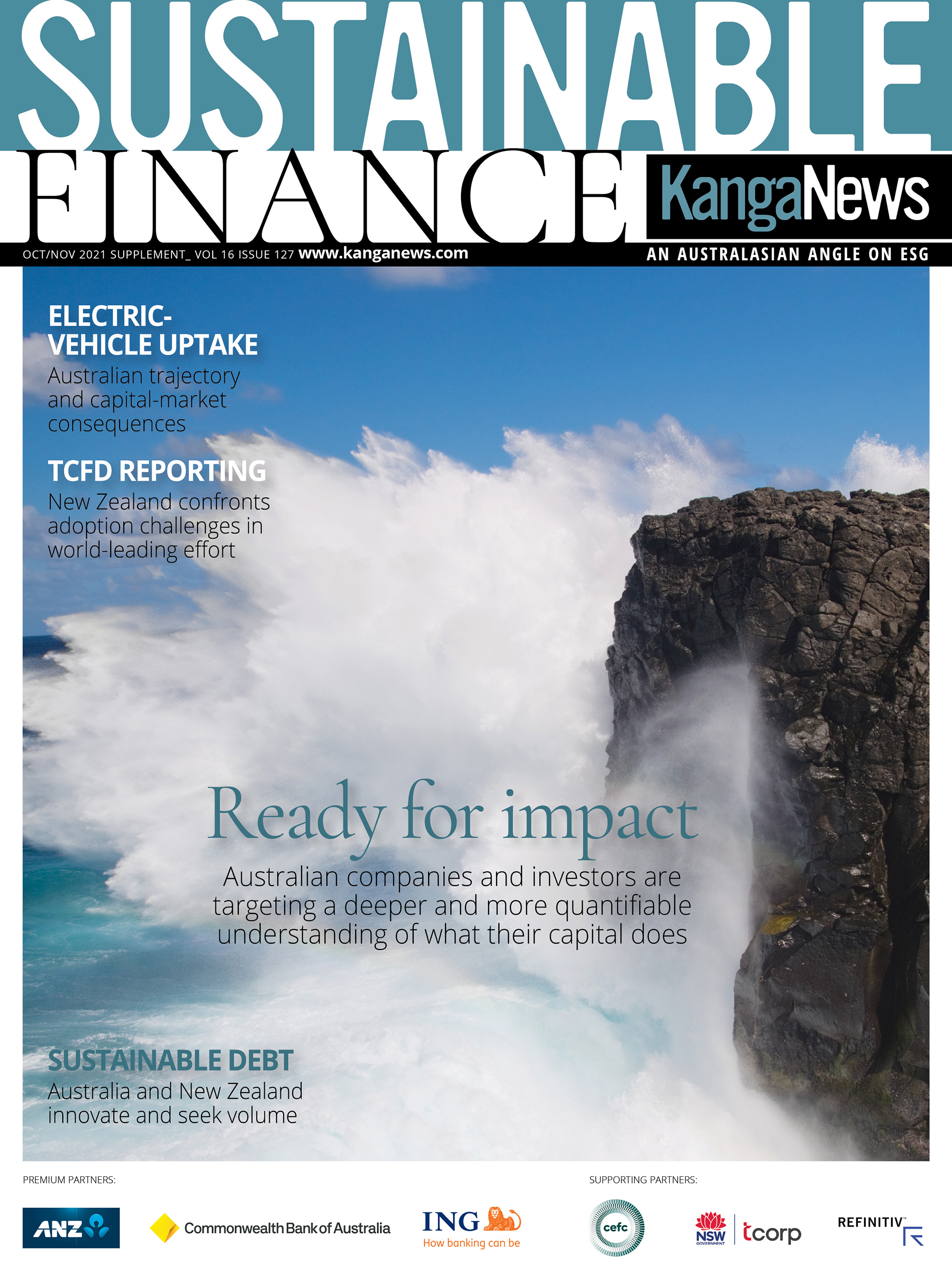
Global sustainability transition opens market doors
Market participants have grown accustomed to European leadership in global sustainable finance. However, the Asia-Pacific region’s critical role in driving climate transition also continues to grow. As a responsible international market participant, Bank of China has been supporting the sustainable development of the global economy via several market-leading green projects and DCM financings.
Debate continues to rage over whether global climate-transition targets are sufficient to meet the Paris Agreement goals. However, there is no doubt the scale of the financing task required to deliver the transition to a net-zero economy will continue to accelerate in coming decades.
As the world’s fourth-largest bank, Bank of China (BOC) has an active role to play in financing the required transition across a client base encompassing more than 60 countries. BOC recognises the significant importance of green finance for its long-term business development and is progressively integrating green and low-carbon finance practices into its overall sustainable-development strategy.
While developing its own green-finance business, BOC is also leveraging its financial expertise to support environmental-transition activities toward low- or zero-carbon in China and across the world.
“Green financing in Asia Pacific is growing exponentially,” explains Brad Scott, managing director and head of debt capital markets at BOC in Sydney. “This is taking the form of sustainability-themed commercial lending and, in particular, corporate and financial bond issuance.”
According to BOC Australia’s analysis – based on Informa data for the year to mid-September 2021 – green, social, sustainability (GSS), sustainability-linked and environmental, social and governance (ESG)-themed bonds raised by issuers excluding the sovereign sector reached US$293 billion equivalent from 487 deals.
Volume and the number of deals have tripled against the prior corresponding period and doubled from full-year 2020. Europe leads the surge with 53 per cent of the total volume raised in the year to date.
The scale will likely ramp up further. Climate Bonds Initiative (CBI) research published in September 2021 estimates annual issuance of green bonds could surpass US$1 trillion in 2023, and suggests the asset class be considered “a mechanism for transition”.
BOC has an active history as an issuer of GSS bonds having priced its first green bond in 2016. Since then, the bank has issued a range of green, blue, social, transition and sustainability bonds in multiple currencies. Following its US dollar debut, it subsequently priced GSS bonds in euros, yuan, Hong Kong dollars, yen and Macanese pataca. In September 2021, BOC Sydney Branch also became the first Australian-based Chinese bank branch to issue a US dollar green bond.
The bank is also increasingly deploying its expertise for its corporate and financial clients issuing in global markets. BOC has joint-lead-managed labelled bonds in US dollars, euros and sterling for clients such as MTR Corporation, Yorkshire Water, Whitbread Group, Three Gorges Hydro, Blackstone Property Partners and European logistics company SEGRO Capital.
“ESG funding opportunities are evolving as they clearly have to – one shoe does not fit all when it comes to finding the right sustainable finance option. Bonds are a relevant option for industries and companies in transition, and we note the effective use of a myriad of securities over time in Australia – including GSS, gender-equality and, most recently, sustainability-linked bonds.”
AUSTRALIAN OPTIONS
Australia is a key market for BOC as an ESG-aligned lender and bond deal arranger. Indeed, two of the early wins for the bank’s growing debt capital markets business in Australia were pioneering ESG-aligned deals. The bank acted as joint lead manager on Lendlease’s A$300 million (US$215.4 million) 10-year green bond priced in March, and as a passive joint lead on Worley’s €500 million (US$588.8 million) sustainability-linked bond (SLB) in June.
In a direct-lending capacity, BOC has also been an active participant in many Australian sustainability-linked loans (SLLs) as the product gains momentum across the corporate landscape. Transactions it has worked on in this format include Downer’s A$1.4 billion SLL facility established last year and Ramsay’s A$1.5 billion refinancing.
“As one of Australia’s largest corporate lenders, BOC continues to support and promote the sustainable-financing evolution across its lending portfolio and via its local debt capital market business,” Scott comments. “There is no question the evolution of ESG is starting to feel increasingly like a revolution given the dramatic shift in issuer and investor focus on sustainability financing.”
Bringing finance under the umbrella of a sustainability agenda clearly makes sense for a growing cohort of Australian borrowers. Following Worley’s SLB deal, the company’s Sydney-based global treasurer, Craig Busch, told KangaNews: “We wanted to align our financing strategy with the overall business-transition strategy. We deliver technical solutions to companies and governments so they can reduce their greenhouse-gas emissions, so we decided an SLB linked to hard CO2 reduction targets made sense for this transaction.”
There are also advantages on the fixed-income demand side. Scott suggested in the wake of the Lendlease deal that the green format created a “halo effect”, incentivising investors to participate at longer tenor than they otherwise may have – in this case, 10 years in a market that has been more comfortable at seven years in 2021. More than 85 investors participated in the transaction.
“Bond investors are very familiar with the quality of Lendlease’s global business and its green financing framework following its green-bond transaction from October last year,” Scott says. “These factors, plus the company’s strong brand recognition in Asia, turbocharged participation across the region.”
Michael Larkin, group treasurer at Lendlease in Sydney, agrees the green format helped. He was confident a 10-year deal would be achievable in the right issuance window given the development of the local market’s capacity for the tenor over recent years.
“Mandate changes and a fervour to invest capital into ESG-friendly or labelled products has also seen bond investors scramble to participate in deals that foster and strive to achieve environmentally friendly outcomes,” Scott adds.
Additional CBI research suggests green bonds in euros and US dollars typically attract larger book cover on average than vanilla issuance, while euro green bonds exhibit greater spread compression. In a sample of bonds issued in H2 2020, average oversubscription was 4.2 times for euro green bonds and 2.9 times for vanilla. The US dollar equivalent figures were 3.4 times for green bonds and 3.3 times for vanilla.
The same dynamics have emerged for Australian companies. Lendlease and Worley both experienced more than three-times oversubscription in their deal books despite unique features: Worley as an SLB and Lendlease’s decision to seek 10-year tenor even at a BBB- rating.
Moreover, ESG linkage helps issuers find a wider demand base. Offshore distribution was solid in Lendlease’s deal – international investors bought roughly a quarter of its bonds, with Asian investors accounting for about 20 per cent – though the size of the transaction likely limited offshore participation.
Scott confirms investors in the Asia-Pacific region are seeking sustainability-themed issuance, noting the US$69 billion equivalent of deal flow in the region in 2021 to early June. “We continue to see ESG acting as a carrot to investors to incentivise them to deploy capital in tenors that otherwise might not be the flavour at the time – just as Lendlease saw in its 10-year orderbook in March, where it attracted more than A$1 billion of demand despite choppy market conditions,” Scott concludes.
WIDER FOCUS
It is not just a green-bond, or even a GSS bond, story for BOC in Australia. As evidenced by its SLL lending and its involvement in the Worley SLB debut, the bank has a positive view on the widening array of options companies are considering to incorporate ESG into their financing plans.
In particular, Scott sees a big future in the use of KPI-linked structures – as demonstrated by the significantly oversubscribed Wesfarmers and Woolworths SLBs in Australian dollars and euros, all of which priced in H2 2021.
“ESG funding opportunities are evolving as they clearly have to – one shoe does not fit all when it comes to finding the right sustainable-finance option,” Scott confirms. “Bonds are a relevant option for industries and companies in transition, and we note the effective use of a myriad of securities over time in Australia – including GSS, gender-equality and, most recently, sustainability-linked bonds.”
Based on BOC’s discussions with many corporate treasuries, the bank is convinced use of sustainability-performance targets is gaining significant traction particularly for issuers where a use-of-proceeds issuance approach is challenging, for instance due to measurement issues. BOC expects to follow emerging trends in this area and to adjust its own credit policies to align with green-financing developments.

WOMEN IN CAPITAL MARKETS Yearbook 2021
KangaNews's annual yearbook amplifying female voices in the Australian capital market.

KANGANEWS SUSTAINABLE FINANCE H2 2021
KangaNews is proud to share cutting-edge information from the global and Australasian sustainable debt market.












